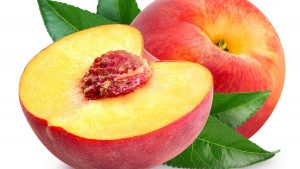
23 interesting facts about Tangerine
- 👁️ 1285
Tangerines, with their burst of sweet, tangy flavor, are more than just a delicious citrus fruit; they are packed with nutritional benefits and have a fascinating history. These small, vibrant fruits are believed to have originated in Southeast Asia and have been cultivated for over 3,000 years. Easily distinguishable by their bright orange skin, which is thinner and easier to peel than that of oranges, tangerines are a popular snack around the world, especially during the winter months when they are most abundant. Beyond their irresistible flavor, tangerines offer a variety of health benefits, making them a fantastic addition to any diet. Here are 23 interesting and informative facts about tangerines.
- Tangerines are a type of mandarin orange, scientifically known as Citrus reticulata.
- The name “tangerine” comes from Tangier, Morocco, a port from which the first tangerines were shipped to Europe.
- They are smaller and less round than common oranges.
- Tangerines have a sweeter and stronger flavor than that of an orange.
- They contain high levels of vitamin C, essential for immune system function.
- Tangerines are also a good source of vitamin A, which is important for vision and skin health.
- The fruit is rich in antioxidants, including flavonoids and vitamin C, which help fight free radicals.
- Tangerines can be separated into 7-14 segments inside.
- They have been grown in China for over 3,000 years.
- Tangerine peel, when dried, is used in traditional Chinese medicine to treat coughs and digestive disorders.
- The fruit is low in calories, making it a healthy choice for those watching their weight.
- Tangerines are more cold-tolerant than oranges, allowing them to thrive in slightly cooler climates.
- The peel of the tangerine is often used in recipes for its zest, adding a burst of flavor to sweets and savories alike.
- In the United States, the largest tangerine growing states are California and Florida.
- Tangerines have a high water content, which helps keep you hydrated.
- The fruit is typically in season from late autumn through spring.
- Tangerines are often eaten fresh, but they can also be juiced, canned, or used in salads and desserts.
- The fiber content in tangerines helps promote regular bowel movements and supports digestive health.
- Tangerine trees can produce fruit for over 50 years if properly cared for.
- The ‘Honey’ variety, also known as ‘Murcott’, is one of the sweetest types of tangerines.
- The leaves of the tangerine tree are used to make a soothing type of tea in some cultures.
- Tangerines were first introduced to the United States in 1840.
- The oil extracted from tangerine peel is used in aromatherapy and has been said to have calming properties.
Tangerines are much more than just a tasty and refreshing fruit; they are a nutritional powerhouse that can enhance our health in numerous ways. With their rich history and versatility in culinary uses, tangerines have become a beloved citrus fruit across the globe. Their sweet, tangy flavor and numerous health benefits make them a popular choice for anyone looking to add more fruit to their diet. Whether enjoyed fresh, juiced, or used to add a zesty flavor to dishes, tangerines are a delightful addition to any meal, proving that good things indeed come in small packages.











